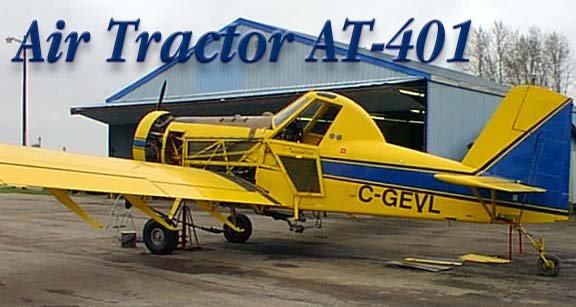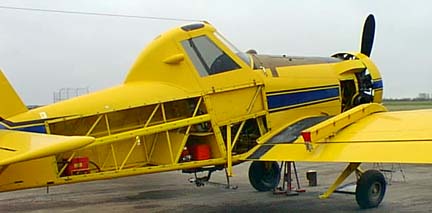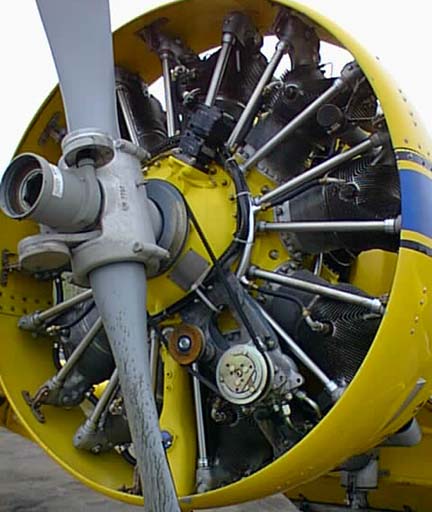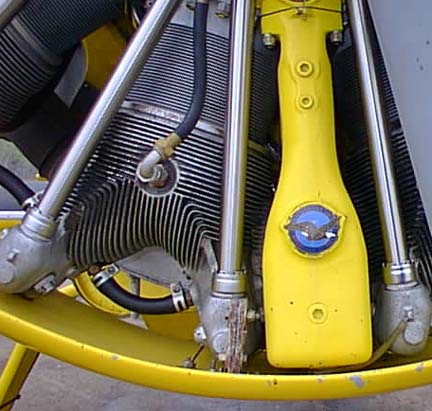

The design of a dedicated "for agriculture aircraft is limited to only a few designs and this is one of those. A Texas spray pilot named Snow designed an earlier version of this machine and began marketing his S1 in the early fifties. His designs improved as the market grew and evolved into the design you see here which was bought by Rockwell Commander and marketed as the Thrush. There are forty-two Thrush variants operating in Canada and more then half of them here in Saskatchewan. Rockwell sold its agricultural line to Aryes who continues to built the rugged aircraft.
After selling the design to Rockwell and the production having been moved to Alabama Snow decided to go back into the business and began producing the Air Tractor from an airfield plant in Olney Texas. The majority are like this one, powered by a growling 600 hp Pratt and Whitney radial engine with a life of just over 1,000 hours. In this picture you can see the air conditioner compressor mounted to the right of the propeller. Extra air conditioner belts are tied to the engine so

The Pratt and Whitney radial is a time honoured design from the 1920s and thirties it is simple and amazingly reliable but expensive to maintain. It has a short life and with a little miss handling one of these cast aluminum cylinder heads (jugs) can be damaged and if replaced can cost close to $10,000 (including labour) However, the engine is relatively cheap and its reliability has stood the test of time.
Air Tractor and Aryes both build aircraft similar to this fitted with Pratt and Whitney PT 6 turbo jets or AiReasrch turbo jet engines. These turbine powered machines can handle even larger application tanks than this 400 US gallon monster.
This Air Tractor was recently imported from Texas and is a 1989 model. It is owned by a

The aircraft is really big weighing in access of 3,800 kilograms. It's airframe is made from welded steel tubing with an aluminum skin, which in these pictures you can see can easily be removed for service and maintenance.
This pictures shows the exhaust system. Mounted on the back of the huge engine are its two mags, an alternator and a carburetor larger then the engine on a lawn mower.
Twenty-four Air Tractor 401 machines are registered in Canada with the majority operating in Manitoba and some in Alberta. Only two other then this one are working in Saskatchewan.

Perhaps the most interesting variant of the Thrush or Air Tractor were those used by the American government's DEA (Drug enforcement Agency). They had long range version built with PT-6 engines, bullet proof glass and armour plating. Painted a dark blue they were used to spray defoliant on drug crops in South and Central America.

The development of sophisticated navigational equipment is gradually creeping into this industry improving the precision of the chemical application and directing the delivery more accurately.
There are helicopter navigation systems that allow the pilot just to follow a panel needle to make sure he does not miss or re-spray an area.

The cockpit is designed to handle a crash and roll-over. Typically these aircraft in a crash crush and tumble so the cockpit is designed to stay intact and protect the pilot.
To improve performance and maintain airflow over the wind at low speeds vortex generators are situated along the wing to improve lift.
